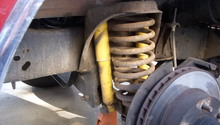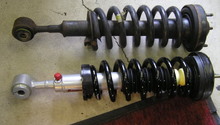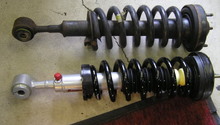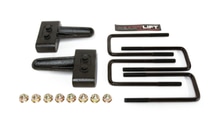Ford F-150/F-250: How to Replace Rear Shocks
Shock absorbers smooth out the up-and-down movement of your F-150 or F-250 when it goes over bumps. Your truck's shocks will wear out eventually and result in poor handling behaviors. Thankfully, you can replace them with a few simple steps and a few proper tools.
This article applies to the Ford F-150 (2004-2014) and F-250, F-350 Super Duty (2005-2014)
First, how do you know if you need to replace your rear shocks? If you notice that your F-150 or Super Duty's ride is not as smooth as it used to be, then it's probably time to replace them. A quick way to test them is to push down hard on your truck's bed. If your truck's shocks are working correctly, the rear of the truck should only bounce once, if it bounces more and takes time to settle, then it's time to replace them. Other indicators can be uneven tire wear, fluid leaks from the shocks, or if your truck has more than 50,000 miles on its odometer.
Once you decide on the new set of shocks that you are going to buy, you then need to decide if you want to have them replaced by a professional or if you want to replace them yourself.

Materials Needed
- 18 mm wrench
- 15 mm socket
- torque wrench
- penetrating oil
- Floor or bottle jack
- jack stands
New shocks can cost anywhere from $60 for a general purpose shock abosrber, to around $300 each for performance shock absorbers. They'll need to be replaced in pairs. Before working on this at home, be sure to have the necessary tools.
Hiring a professional is the easier route if you don't have the necessary tools or experience. The cost will vary, since you will need to pay for the new shocks in addition to the going labor rate. Labor isn't terribly time consuming for these units, so expect to shell out an additional $200 to $300 or so for labor.
At the end of the day if you decide to replace your rear shock absorbers on your own, there are only a few steps:
Step 1 - Remove the rear tire
Loosen the lug nuts with the truck still on the ground. Lift the rear of the truck with a floor jack or a bottle jack. Lower the truck frame onto jack stands. Then, remove the lug nuts and wheel. In some cases you can leave the rear tire on, but you will have more room to work with if you remove it.
Step 2 - Jack up the rear of the truck
Make sure the truck is parked on a leveled surface and block the front wheels. You'll want to jack up the rear of the truck with a floor jack positioned under the rear axle. Place jack stands under the axle, which are high enough to take the pressure off the shock absorber. Once the rear of the truck is secure, you can remove the wheels.

Step 3 - Remove the old shocks
Remove the upper and lower shock retaining bolts. Use a wrench the hold the nut while using a socket wrench to unscrew the bolt. Spraying the bolts with a type of penetrating oil will make loosening them easier, especially if they've been rusted tight. Start with the top bolt and then move to the bottom.
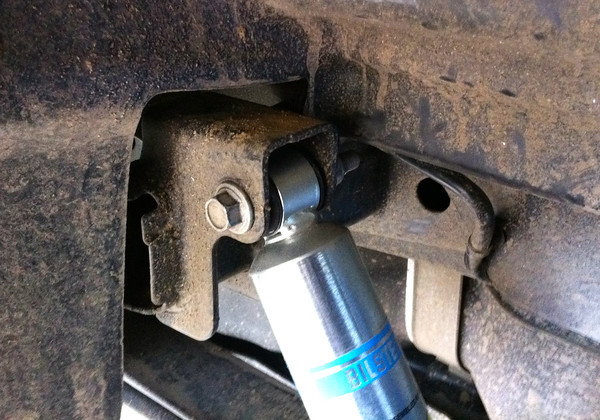
Step 4 - Attaching the new shocks
Reverse of the process you took to remove the old one. Attach the new shock starting with the upper shock bolts and washers. Do not cut the retaining strap until you bolt in both ends as it will help keep from fully extending. To install the bottom of the shock you will need to compress the shock a bit with your hand to line it up with the shock bolt. You can use a torque wrench to torque the bolts to spec. Once the nuts on both the top and bottom of the shock have been tightened, re-place the tire and lower the truck back on the ground.
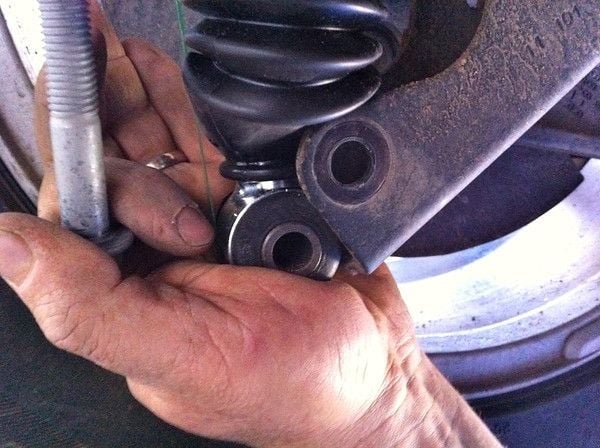
(Related Article: Shock Absorber Reviews - Ford-trucks.com)
Step 5 - Take your truck for a test drive
Once both rear shocks have been replaced, take it for a test drive and listen for any squeaks or rattles, which may indicate that the shocks are lose or installed incorrectly.
Featured Video: How to Replace the Rear Shocks
Related Discussion
Bilstein 5100 Rear Shock Absorber Install - F150forum.com

